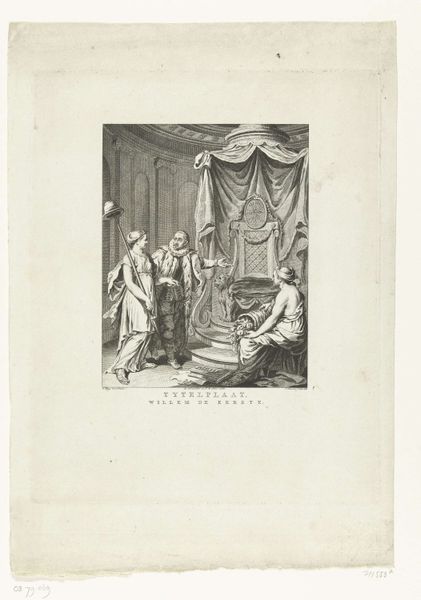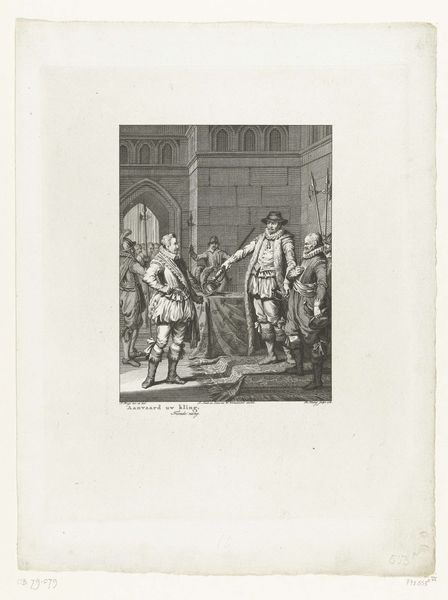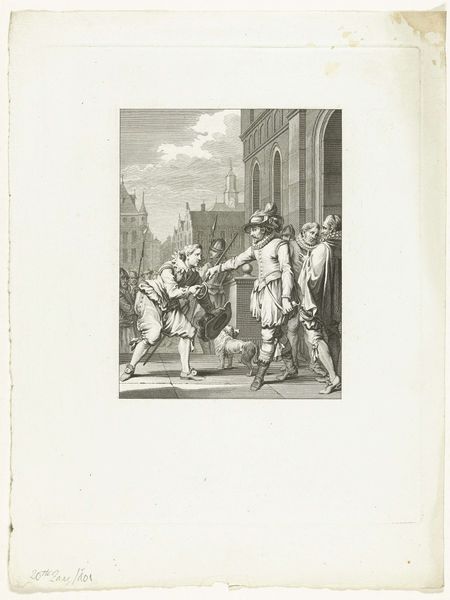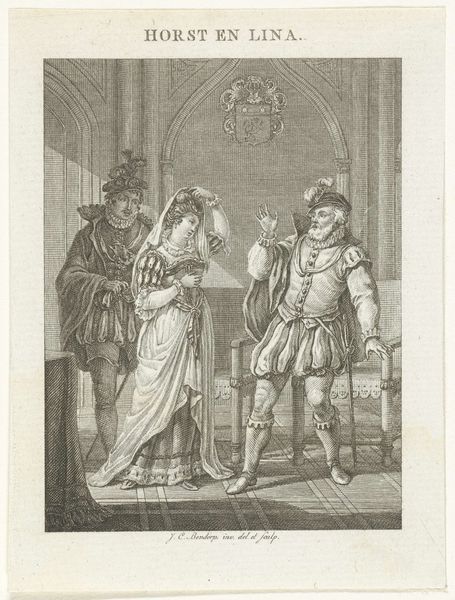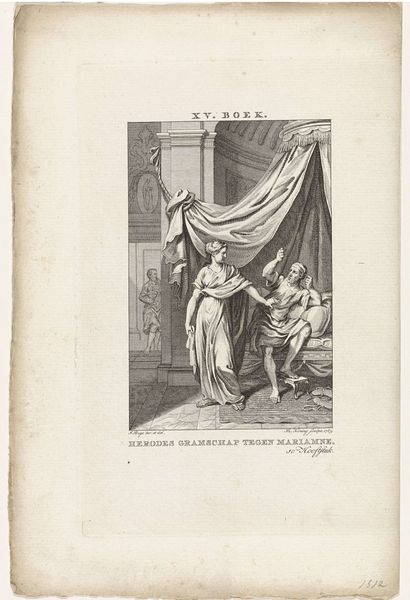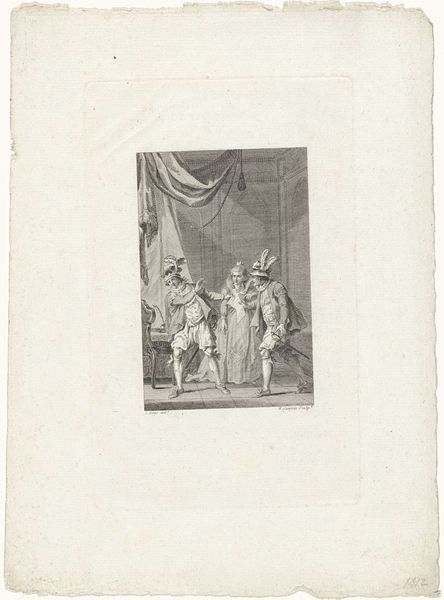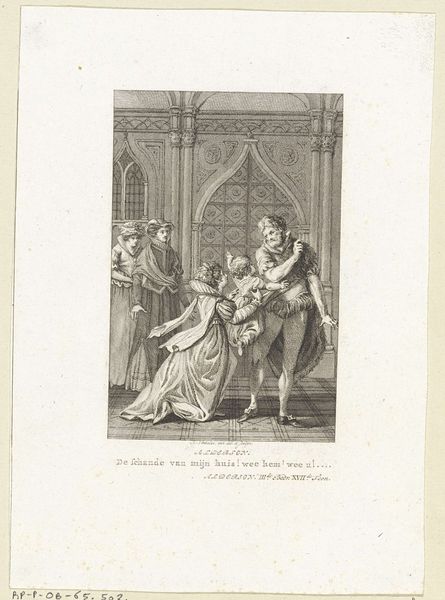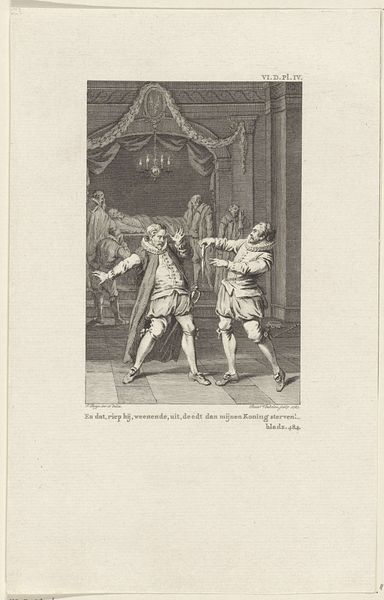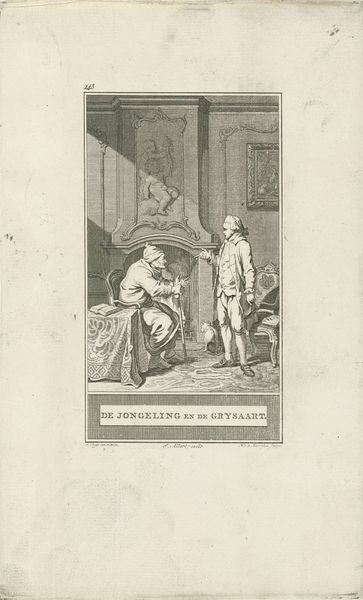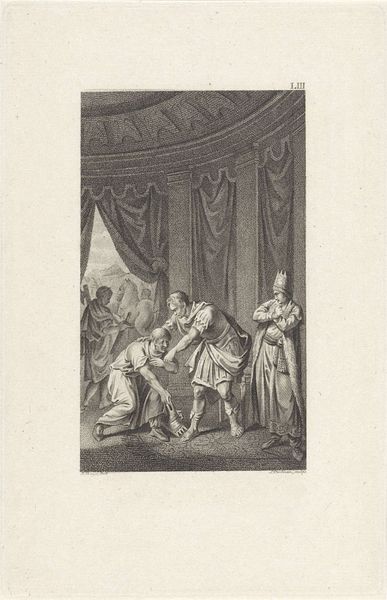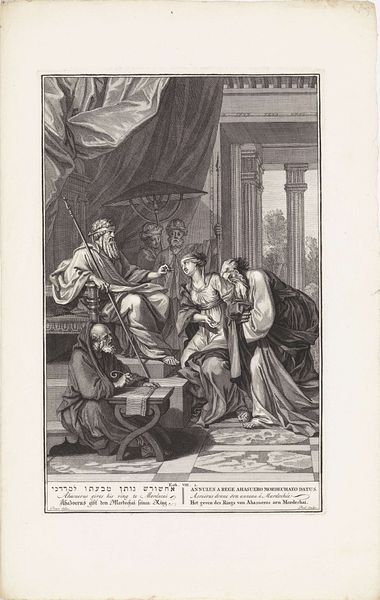
Mondragon weigert Requesens van dienst te zijn zolang Aldegonde nog gevangen zit, 1574 1781
0:00
0:00
theodoorkoning
Rijksmuseum
Dimensions: height 270 mm, width 215 mm
Copyright: Rijks Museum: Open Domain
Editor: This is a print called "Mondragon weigert Requesens van dienst te zijn zolang Aldegonde nog gevangen zit, 1574" by Theodoor Koning, made in 1781. It's an engraving and I’m struck by how the artist created so much detail using what looks like a fairly simple process. How do you interpret this work? Curator: As a materialist, I'm immediately drawn to the socio-political implications of the engraving as a medium. It was a reproductive technology, used here to disseminate a particular historical narrative. The choice of this historical moment – Mondragon's refusal of service – highlights a moment of internal conflict within the structures of power. How does the medium itself contribute to the message? Editor: That's interesting! So, you're saying the *print* itself played a role in shaping public opinion? Because it could be easily distributed and consumed? Curator: Exactly. The engraving facilitated the wide circulation of this specific portrayal of authority and resistance. We should also consider who controlled the means of production and distribution of these prints. Who was the intended audience, and what message were they meant to take away? Editor: It's like the 18th-century version of a political meme! Were prints like this considered "high art" at the time, or were they more of a mass-produced commodity? Curator: That’s a key question! It challenges the traditional hierarchy between art and craft. While engravings could be considered skilled craftsmanship, their primary function here was likely to convey information and sway opinion. Examining the labor involved in its production—the engraver's skill, the publisher's investment— reveals the material conditions shaping the image's meaning. Editor: So, it’s not just about what’s *in* the image, but *how* it was made and distributed that gives it significance. I see that now! Curator: Precisely. And how that distribution potentially fueled national sentiments. Thinking about the materiality opens up new avenues for understanding the past. Editor: This really makes me think about art in a totally new way! Thank you.
Comments
No comments
Be the first to comment and join the conversation on the ultimate creative platform.

